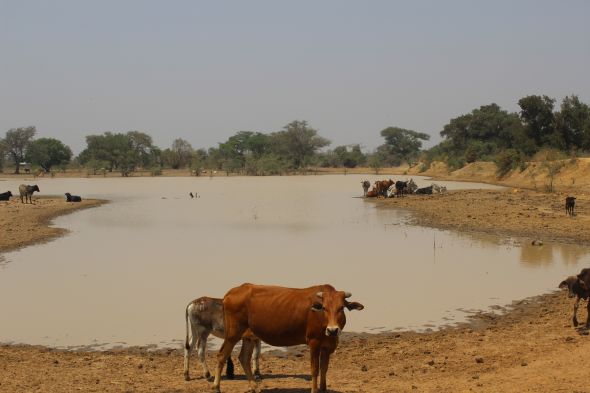As population growth and economic expansion in southern Africa build pressure on the region’s vital water resources, decision and policy makers urgently need a comprehensive approach to analyze competing demands for water to produce food and generate energy – referred to as the water-energy-food nexus. This is critical for facilitating decisions that contribute effectively to equitable and sustainable development.
 In search of solutions, the International Water Management Institute (IWMI) recently joined a group of African and European partners in Zürich, Switzerland, to launch a project called DAFNE. Its name refers to a decision-analytic framework for exploring the water-energy-food nexus in complex and transboundary water resource systems of fast-growing developing countries.
In search of solutions, the International Water Management Institute (IWMI) recently joined a group of African and European partners in Zürich, Switzerland, to launch a project called DAFNE. Its name refers to a decision-analytic framework for exploring the water-energy-food nexus in complex and transboundary water resource systems of fast-growing developing countries.

With funding from the European Union, the 4-year project will help experts in southern Africa address nexus-related challenges by developing responsive management systems, based on a better understanding of the Omo and Zambezi River basins. DAFNE will analyze the ongoing transformation of these basins, using an integrated and participatory approach that promotes shared learning about the risks and opportunities involved. The project’s objectives are to develop a better understanding of the water-food-energy nexus in the basins, generate and explore alternative planning and management solutions, and contribute to measures that foster profitable but equitable use of resources.
The partners in Africa, along with IWMI, are the Collaborative Center for Earth System Science (ACCESS), Water and Land Resource Center (WLRC), University of Zambia (UNZA) and Eduardo Mondlane University (EMU). The participating European organizations are VISTA Remote Sensing in Geosciences GmbH, Politecnico di Milano, International Center for Research on the Environment and the Economy, Swiss Federal Institute of Technology, Katholieke Universiteit Leuven, University of Aberdeen, Osnabrueck University, ATEC-3D Ltd and the European Institute for Participatory Media.
The project builds on important progress achieved earlier this year. In February, DAFNE held its first stakeholder workshop in Lusaka, Zambia. Representing the water, energy and food sectors, stakeholders met with project partners to discuss emerging issues and solutions for promoting sustainable resource use. Then, in September, the first Negotiation Simulation Lab for the Zambezi Basin took place, again in Lusaka. Using participatory mapping, stakeholders jointly examined the current situation in the basin as a whole and in specific subbasins – the Luia in Mozambique and Lunsemfwa in Zambia – and identified actions, whether hypothetical or planned, to address significant concerns.

DAFNE also developed a geoportal in early 2017, which is hosted by Politecnico di Milano in Italy. Including a geo-database, a web-interactive map and a chart tool, the geoportal will help partners access and analyze data that the project collects and generates. It will also serve the purposes of disseminating project results and building capacity. Through customized access, stakeholders will be able to use the geoportal for their own in-depth analysis. It will also be possible for the general public to browse through DAFNE’s final results.
The Katholieke Universiteit Leuven in Belgium has been tracing and compiling data that will be used to model the water-energy-food nexus in the two case study basins. This includes climatic data – spatially interpolated on the basis of long-term historical records – and meteorological data derived from satellites. Researchers will also acquire hydrological data from remote sensing with Landsat imagery.
The project should deliver preliminary results by the latter half of 2018, which DAFNE partners will then share widely.

